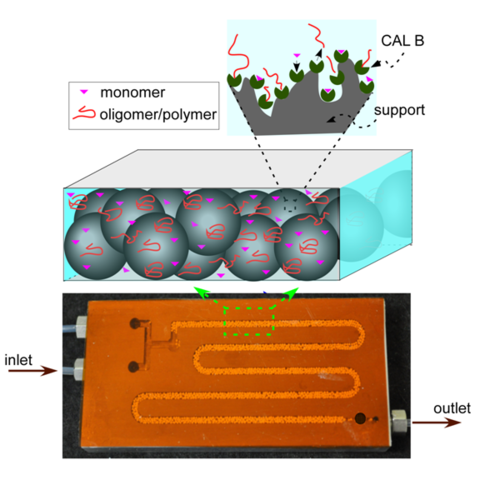Summary
Economic growth, such as that experienced in developed countries over the last century, cannot continue into the next century nor spread to less developed countries unless industries and societies reduce the amounts of natural resources and energy they consume and the wastes they produce. However, the adoption of renewable polymeric materials in a broad range of applications relies on the development of materials with the same predictable, controllable properties as traditional materials.
Those attributes were frequently obtained in traditional materials through inorganic catalysis and, more recently, controlled radical polymerizations combined with a thorough understanding of the mechanisms of both controlled and uncontrolled, but optimized, reactions. Enzymatic catalysis represents a "greener" route to new degradable materials, often from renewable feedstocks that should be able to perform in many of the same applications, if their preparation is controlled.
Description

In this project, use innovative measurements to optimize existing materials synthesis and discover new routes to polymers from renewable feedstocks by providing characterization methods that can describe the mechanisms and of enzymatic catalysis of polymers from renewable feedstocks and synthetic method innovations.
We use tools such as microfluidic technologies, in situ spectroscopies, and traditional chromatography to understand these processes and improve the range and quality of products available using them.
Major Accomplishments
We built a microreactor platform with a packed column of beads containing immobilized enzymes. The reactor accelerates the reaction by an order of magnitude, increases the obtainable molecular mass, and improves recovery and recyclability of the enzyme. (JACS 2011)
We have also constructed a kinetic model capable of producing the full mass distribution of polyesters produced by lipase catalysis, including low mass cyclics. The model describes the dynamic role of water in these reactions, leading to new processing methods that increase further the obtainable molecular mass. (submitted)
Project Summary (PDF)

